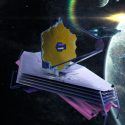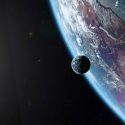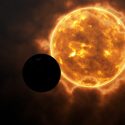A gas cloud located 500 light years away from our solar system is about to become a planet. This process usually takes a few hundred million years, but what if we made it happen much quicker. And instead of it happening so far away, what if it happened right next to Earth?
How would this new planet form? And what would it mean for life on our planet?
When a new planet forms, it’s a pretty cataclysmic event. It happened with our Solar System 4.5 billion years ago. The process created all the planets we know today, as well as our Sun.
But instead of all that happening, what if it was just one new planet, in an already existing solar system? If a planet formed in our Solar System, it would take over 100 million years. But for the sake of this video, we’re going to speed that up just a bit.
First, it could start with a gas cloud entering our Solar System. The Sun’s gravitational pull could cause the gas cloud to start spinning rapidly. Eventually, dust and rocks would form.
Depending on the gas cloud’s location, we might be able to see this happening, just not with the naked eye. You’d need a decent telescope to be able to see the planet form. Most likely, you’d only see a big ball of space dust.
So although you won’t be able to see this planet very well, what you could see are thousands of asteroids and other space debris potentially hurtling towards Earth. That’s because as this gas cloud continues to spin, more and
more dust and debris begins to form. These grain-sizedpieces of dust would start to heat up.
Then they’d start smashing into each other, forming bigger and bigger rocks. This is known as accretion. This could continue to happen until some rocks grew to a few kilometers in size, creating a planetesimal. Planitesimals are like the building blocks of planets.
Eventually, the planetesimal could become big enough that it starts to attract other large objects, all throughout space. And with all these objects flying around space, there’s a good chance some of them could hit Earth.
As Earth is getting hit by asteroids, our new planetesimal would continue to get larger and larger, and will continue to attract other planetesimals or other large objects. This will continue until the planetesimal gets so big that it collapse in on itself, and become a planet.
A sphere would form and any heavy elements like iron would sink to the center of the sphere, and the silicates would float to the top. If the planet were big enough and close enough to Earth, there’s a good chance this new planet could suck up and destroy Earth completely. We’d have no choice but to wait and watch the Earth get completely destroyed as it crashes into the new planet.
And then Earth would be gone. Millions of years later, this new planet would cool off, and life could form. So sure, we have a shiny new planet, but it probably wasn’t worth it. If a new planet were to develop in our Solar System- it could be the end of humanity. It’s probably best we keep the Solar System just the way it is.
Subscribe to What-If on YouTube or follow the show on Facebook Watch.
Sources
- “Our Solar System”. 2020. NASA Solar System Exploration.
- “Where Does The Solar System End? | NASA Space Place – NASA Science For Kids”. 2020. spaceplace.nasa.gov.
- “Planetary Fact Sheet”. 2020. nssdc.gsfc.nasa.gov.
- “How Far Is Neptune’s From The Sun? – Universe Today”. 2009. Universe Today.
- “Possible Evidence Of Ongoing Planet Formation In AB Aurigae”. Boccaletti, A., E. Di Folco, E. Pantin, A. Dutrey, S. Guilloteau, Y. W. Tang, and V. Piétu et al. 2020. Astronomy & Astrophysics 637: L5. doi:10.1051/0004-6361/202038008.
- “The mass of the Oort cloud”. Astronomy And Astrophysics 118 (1): 90-94.



























